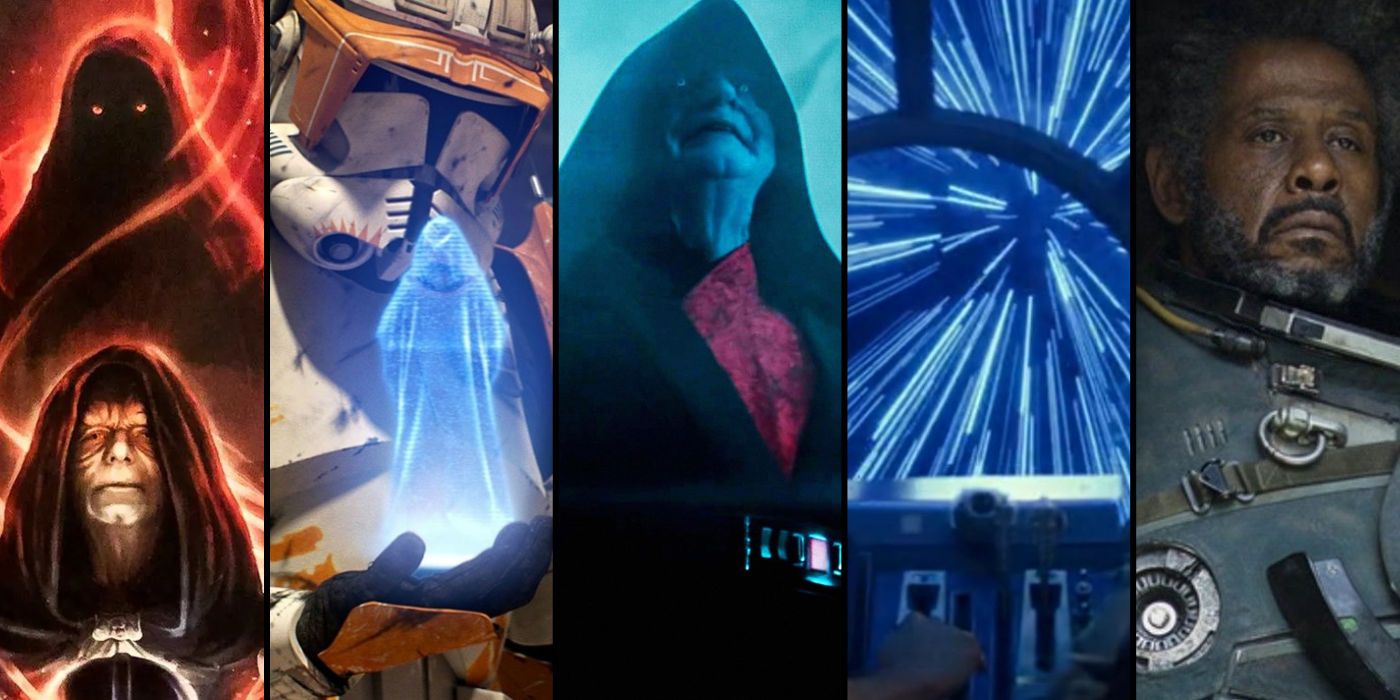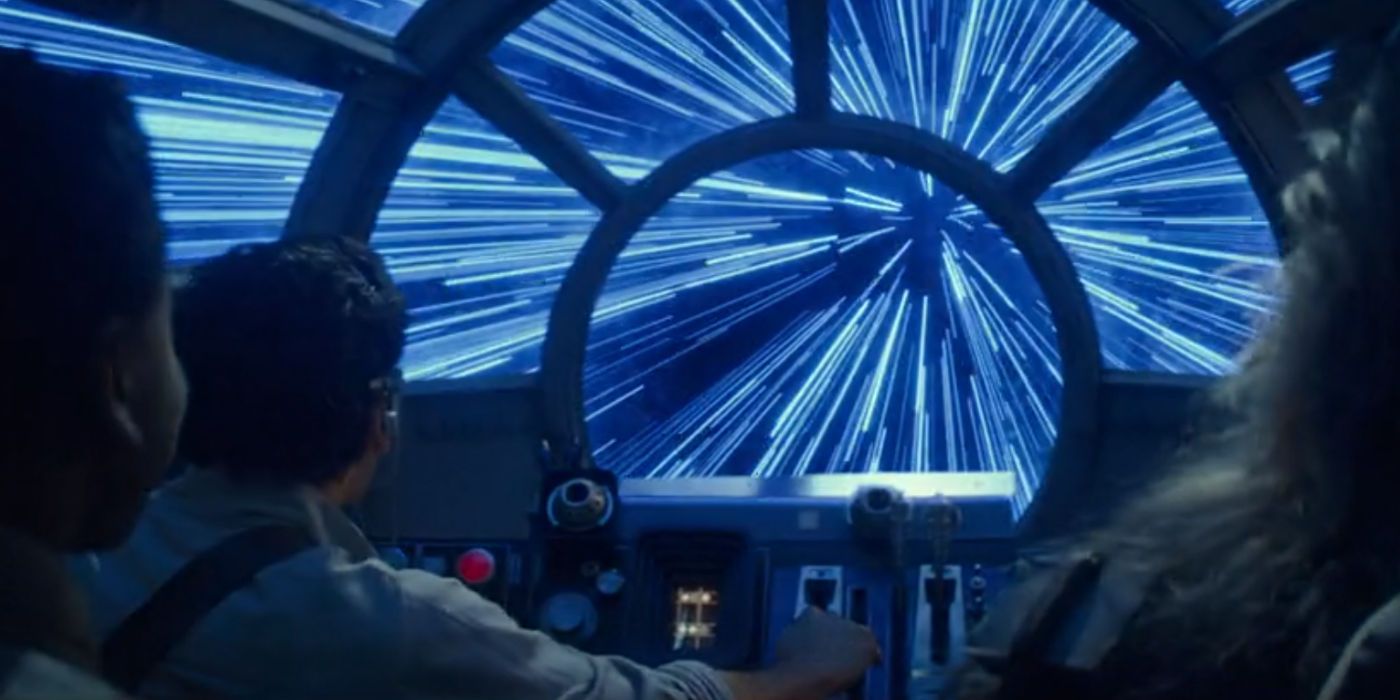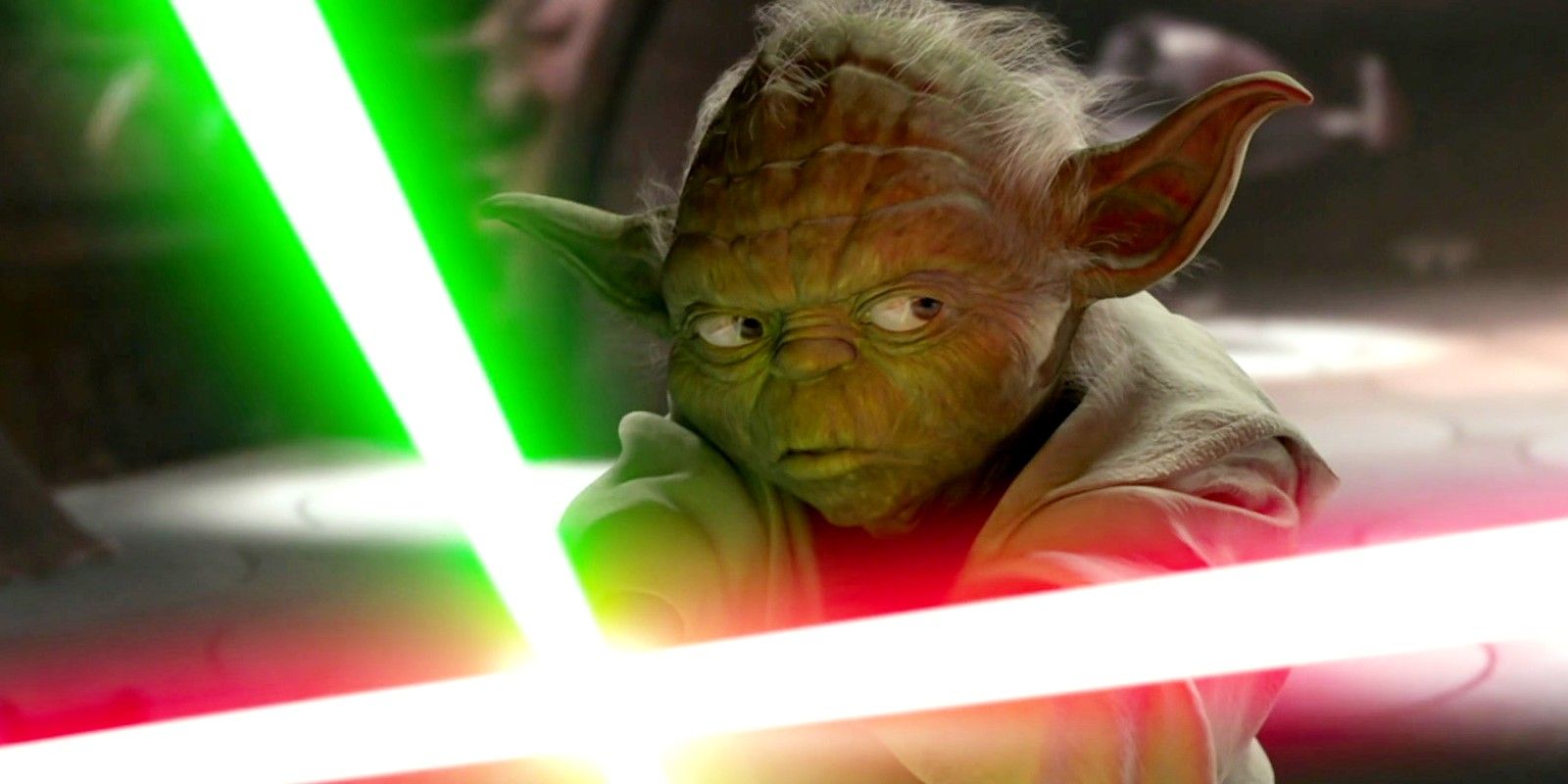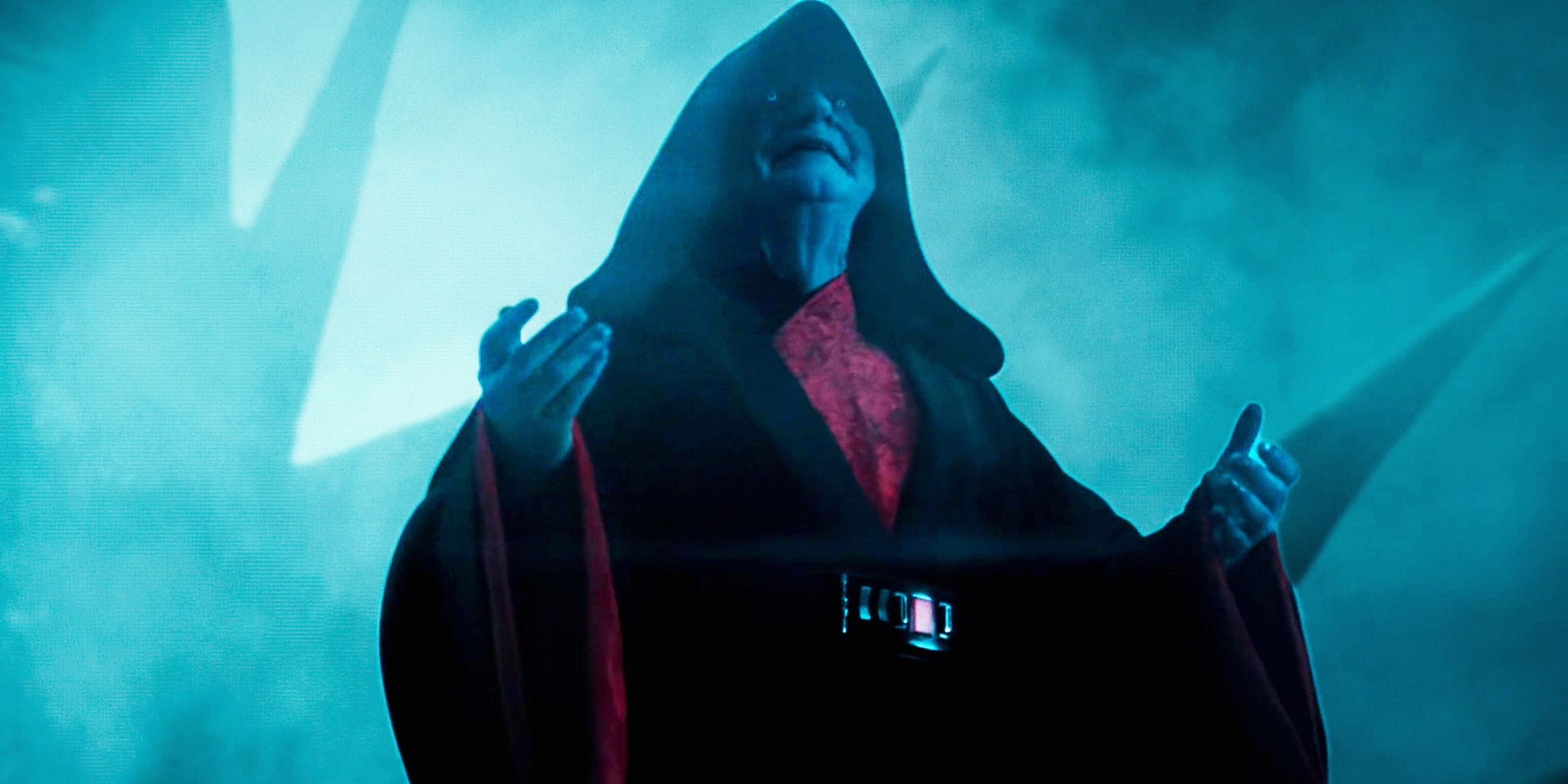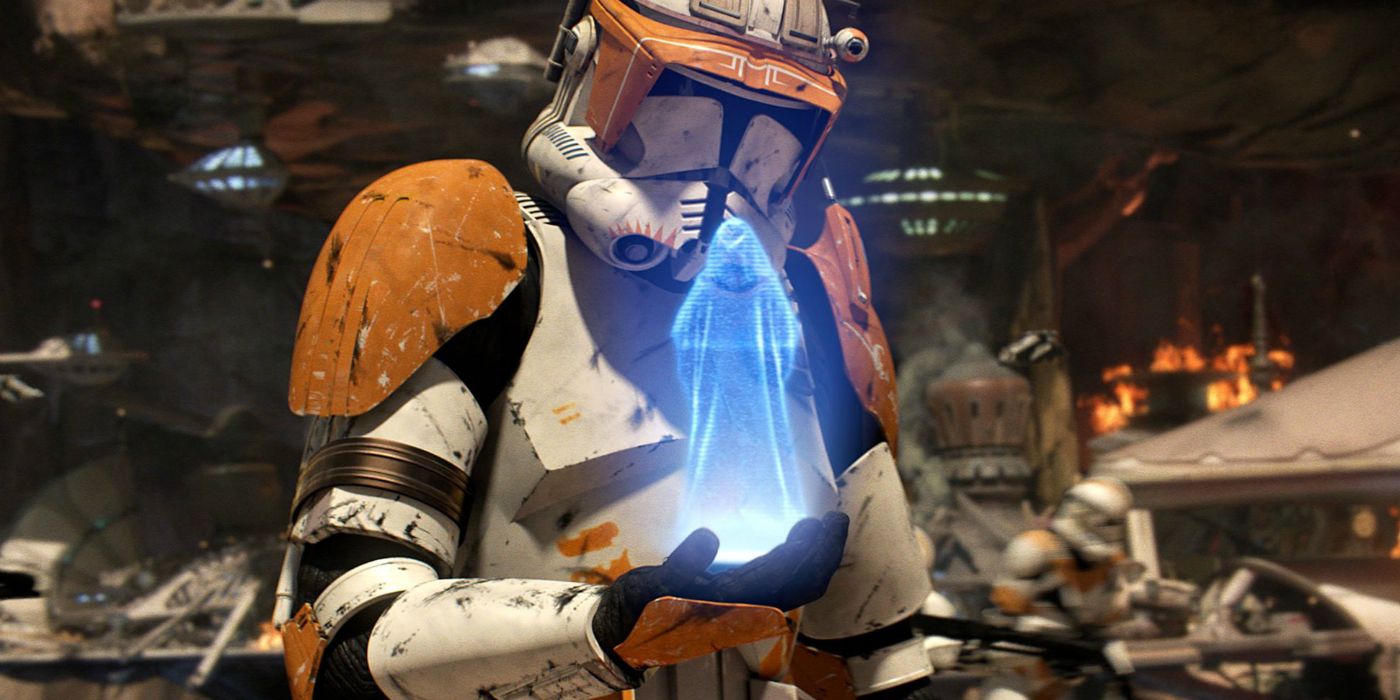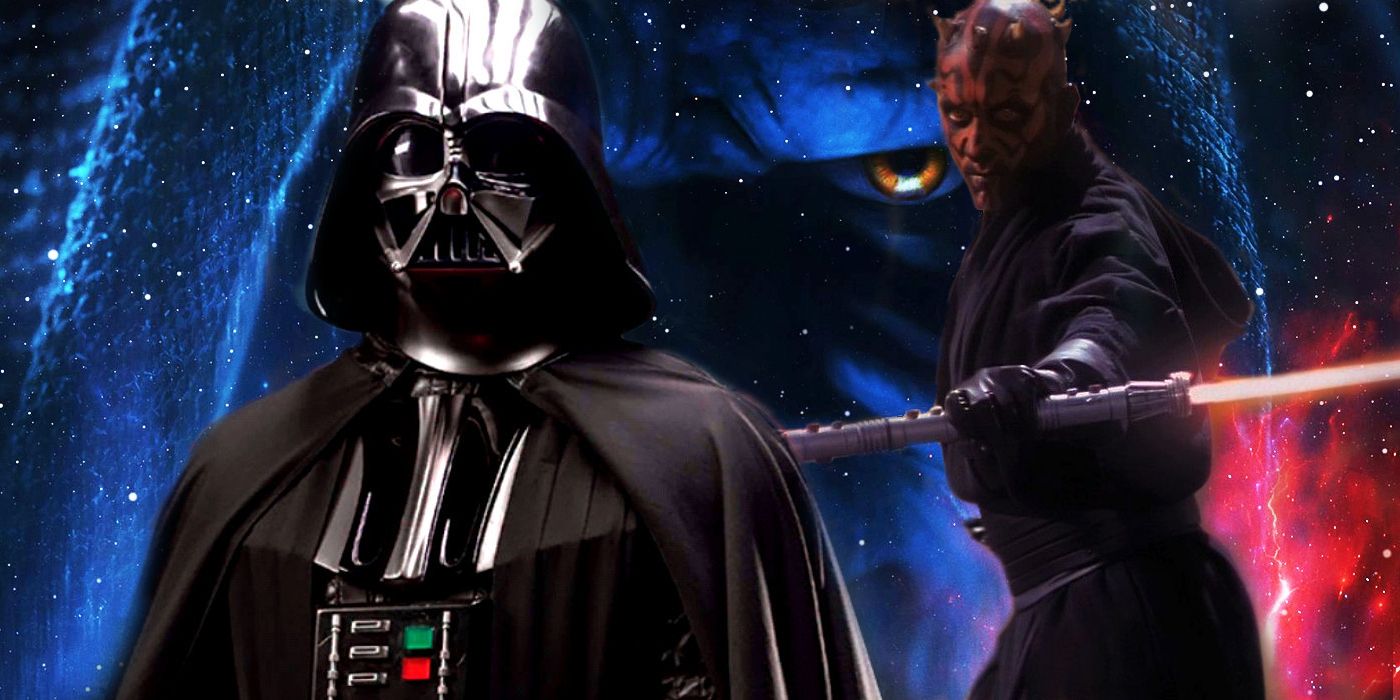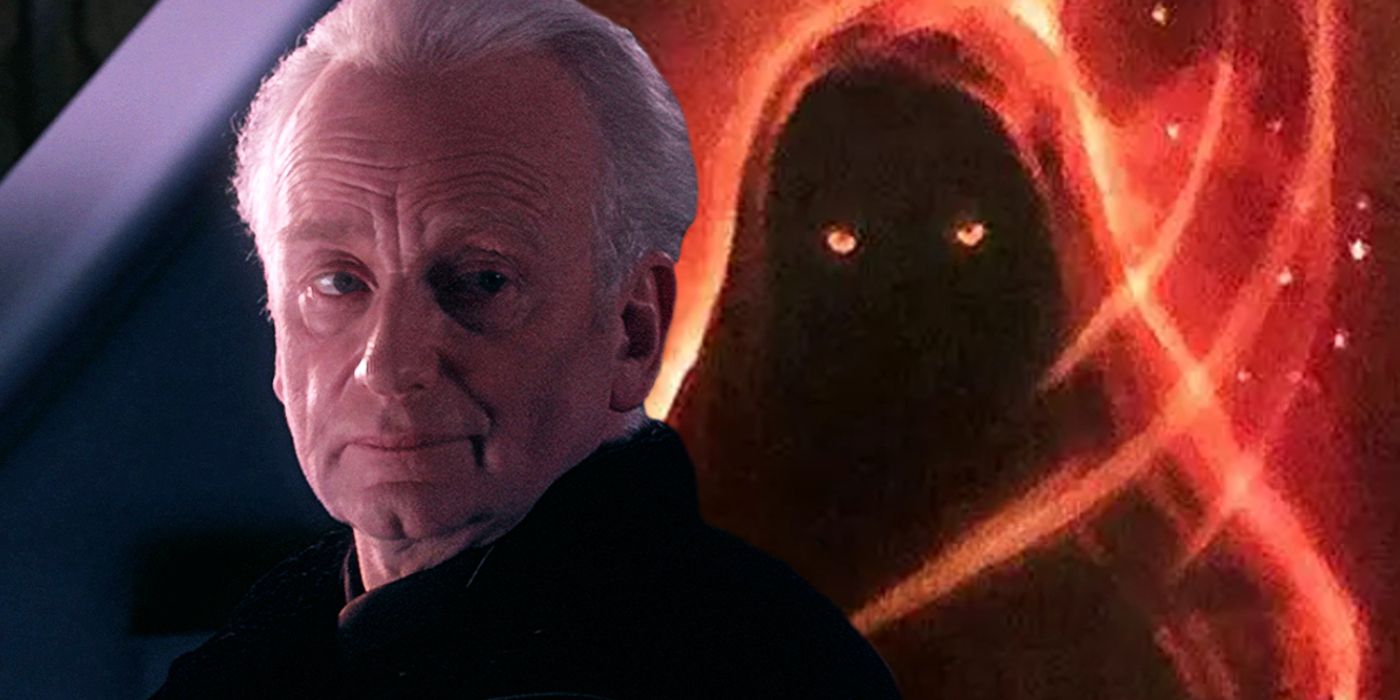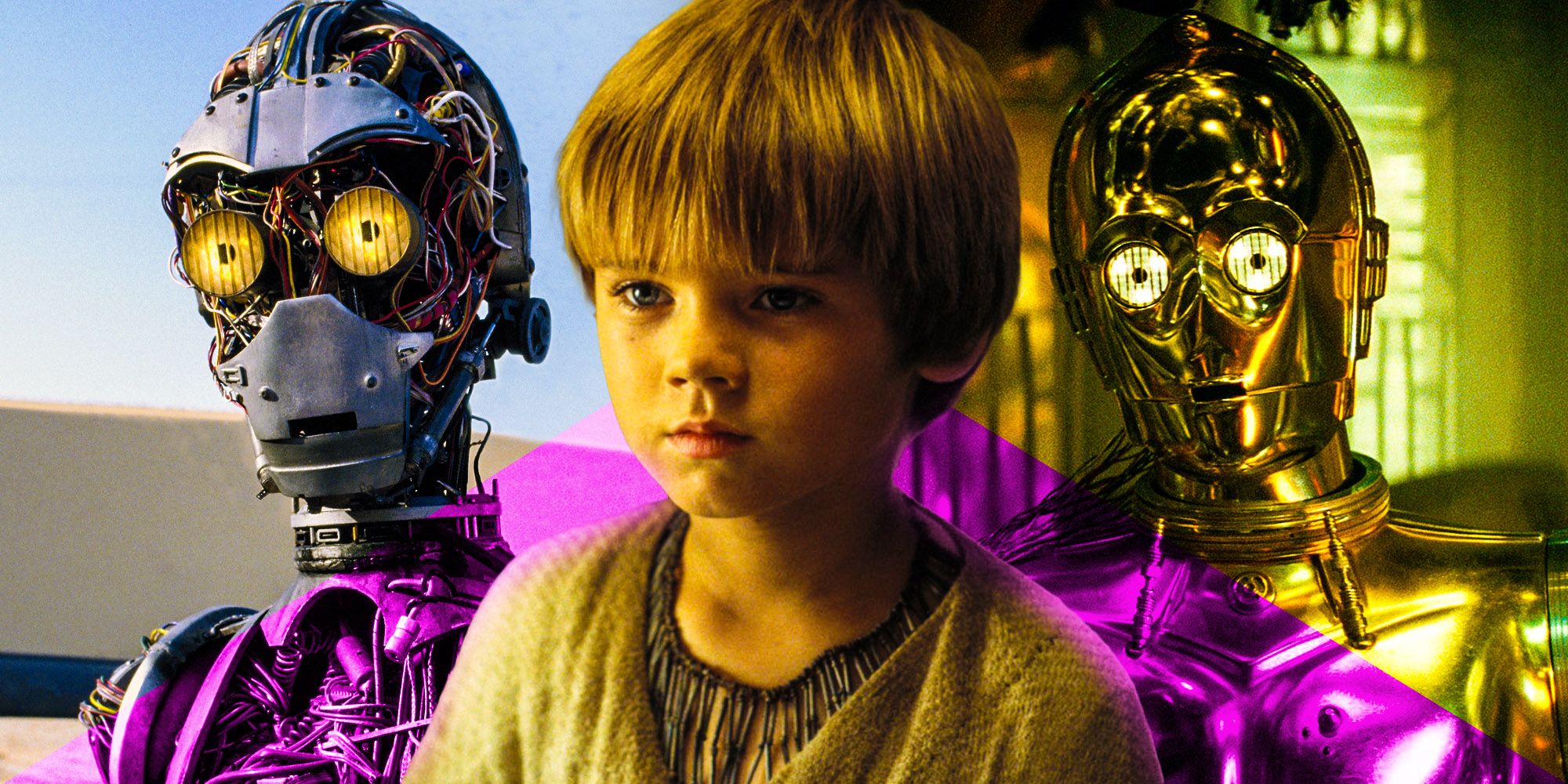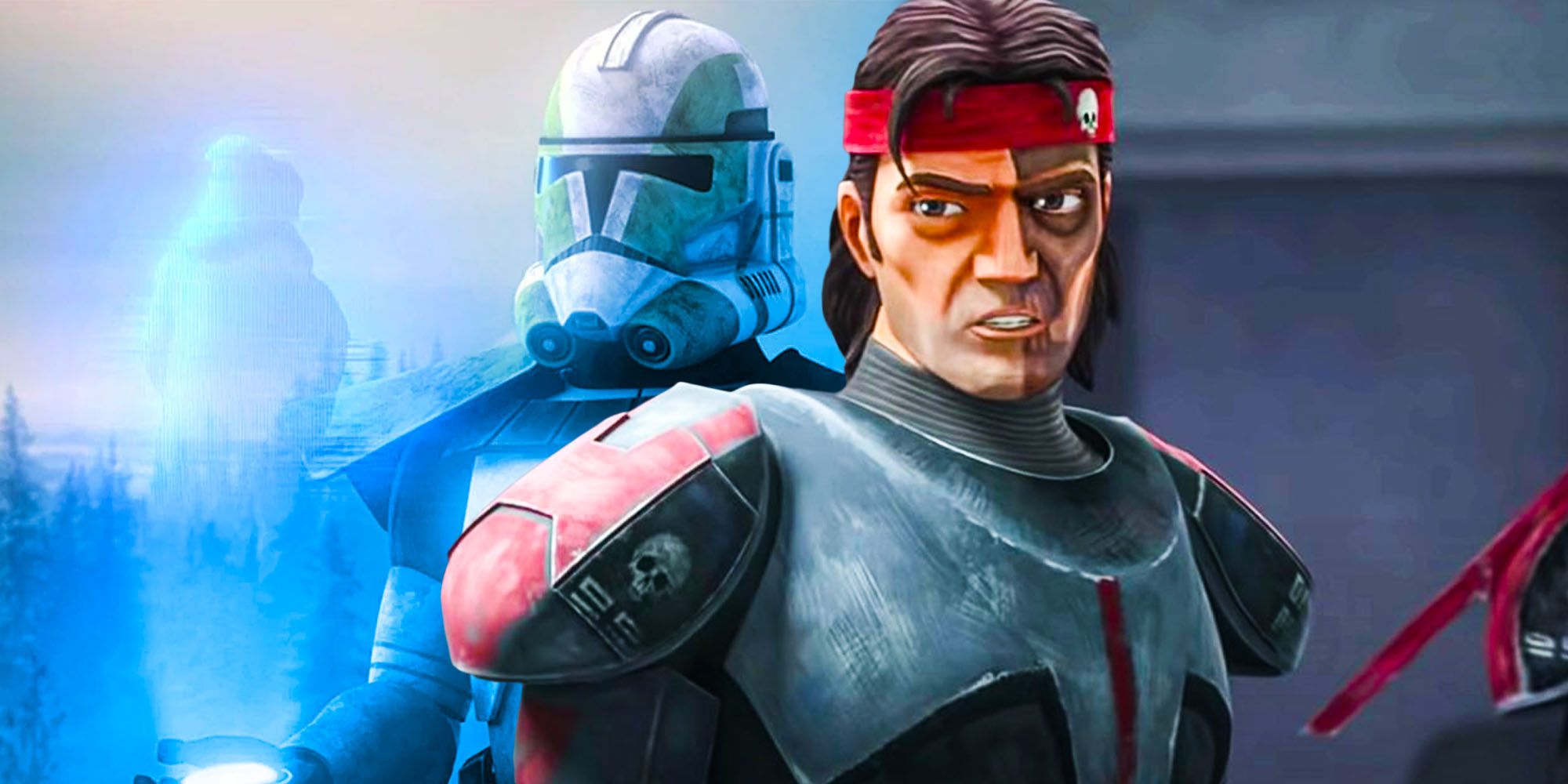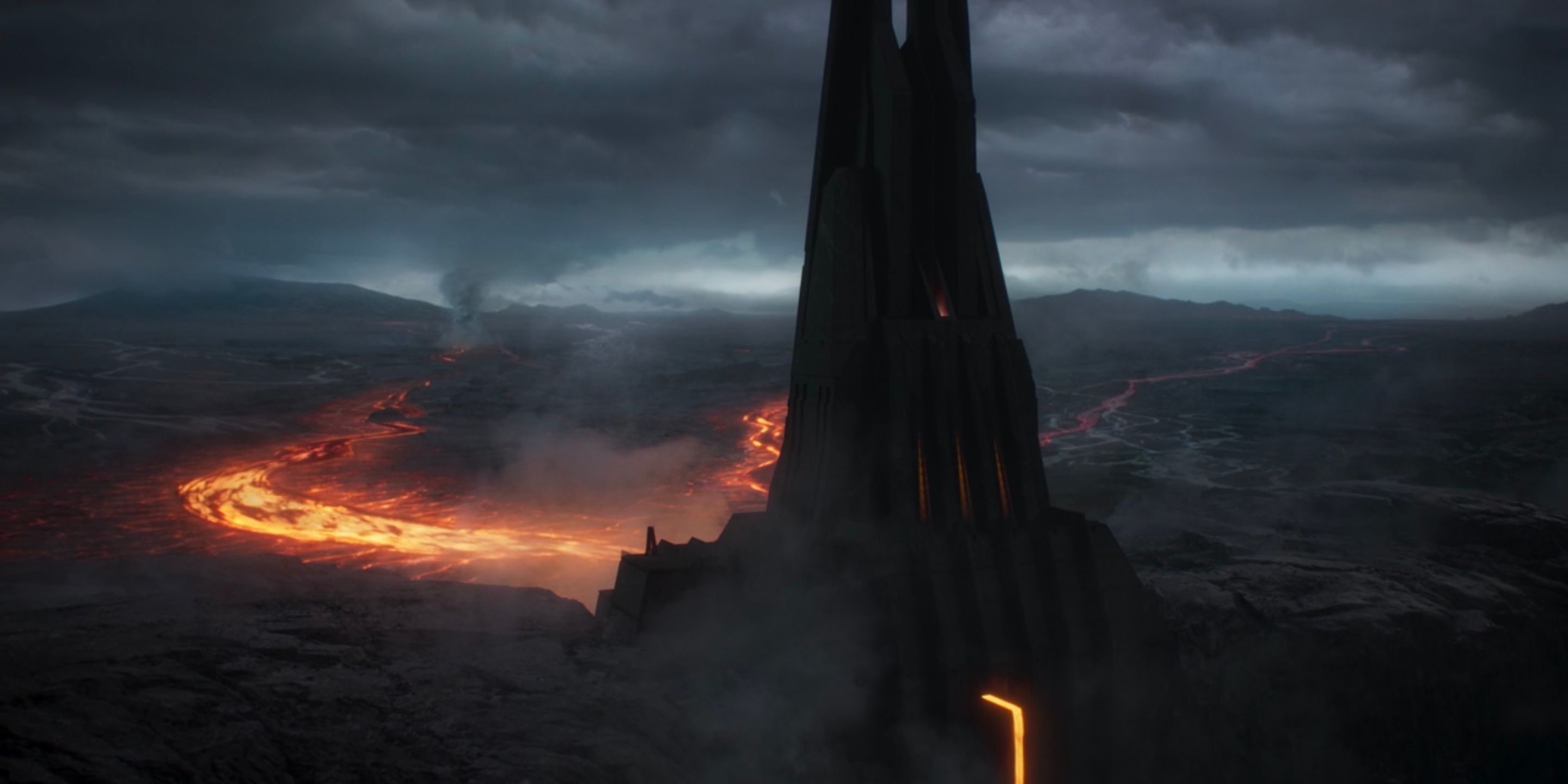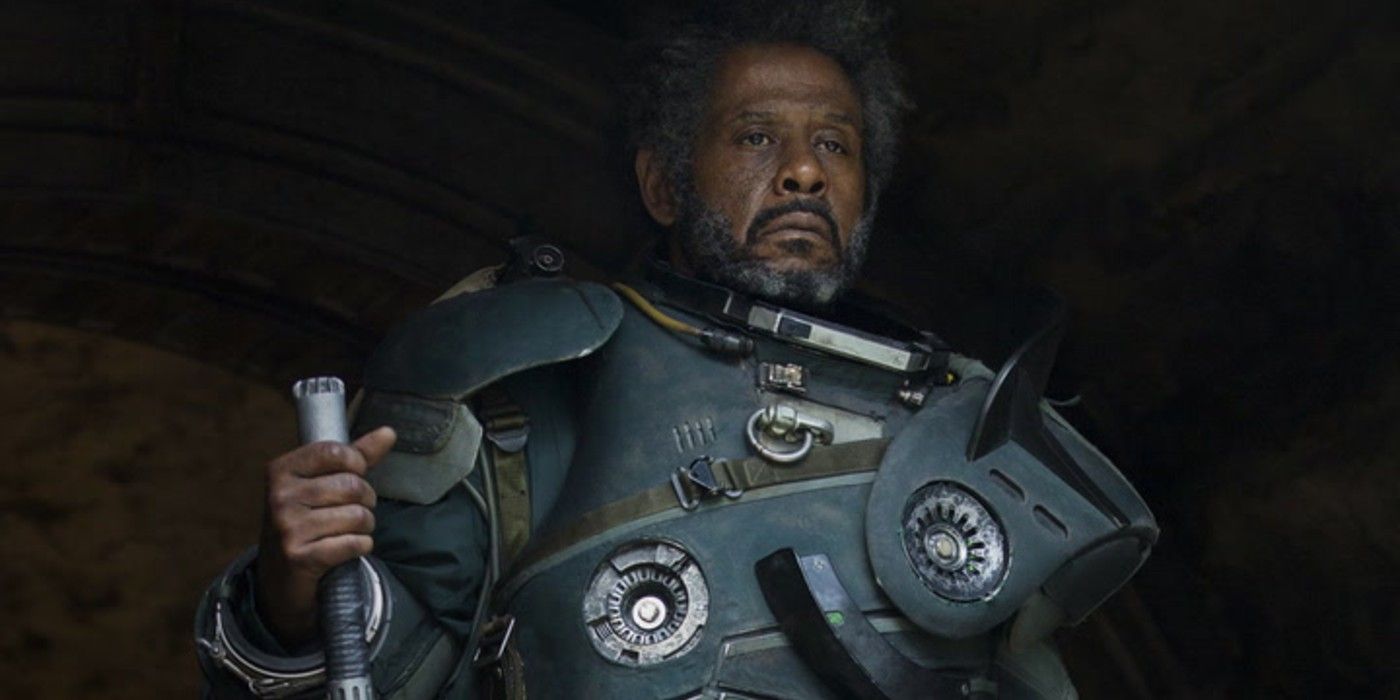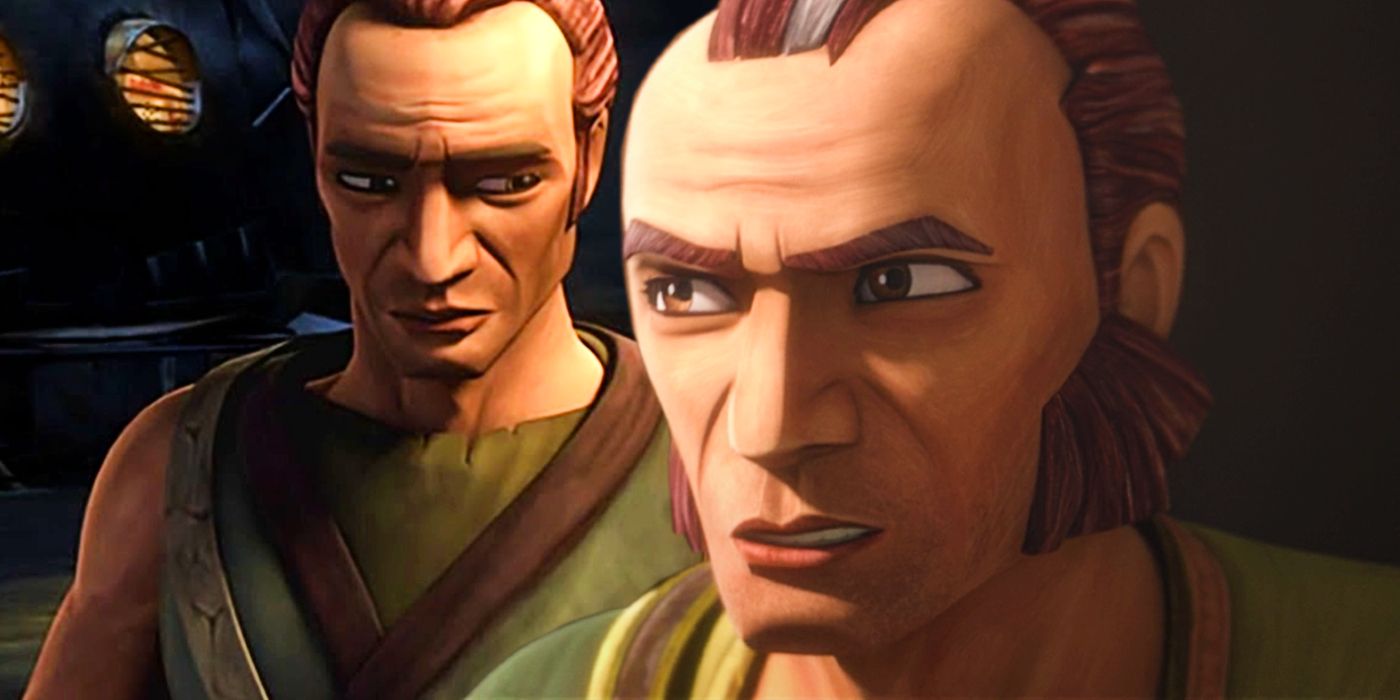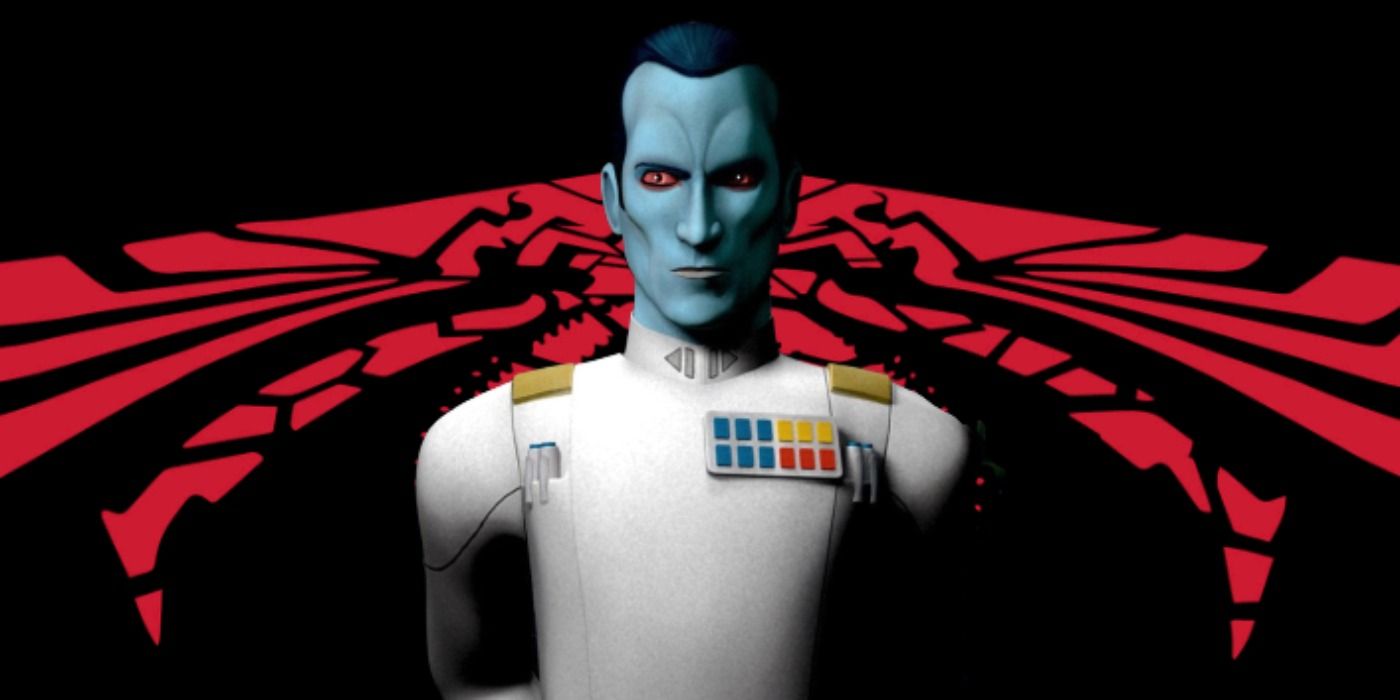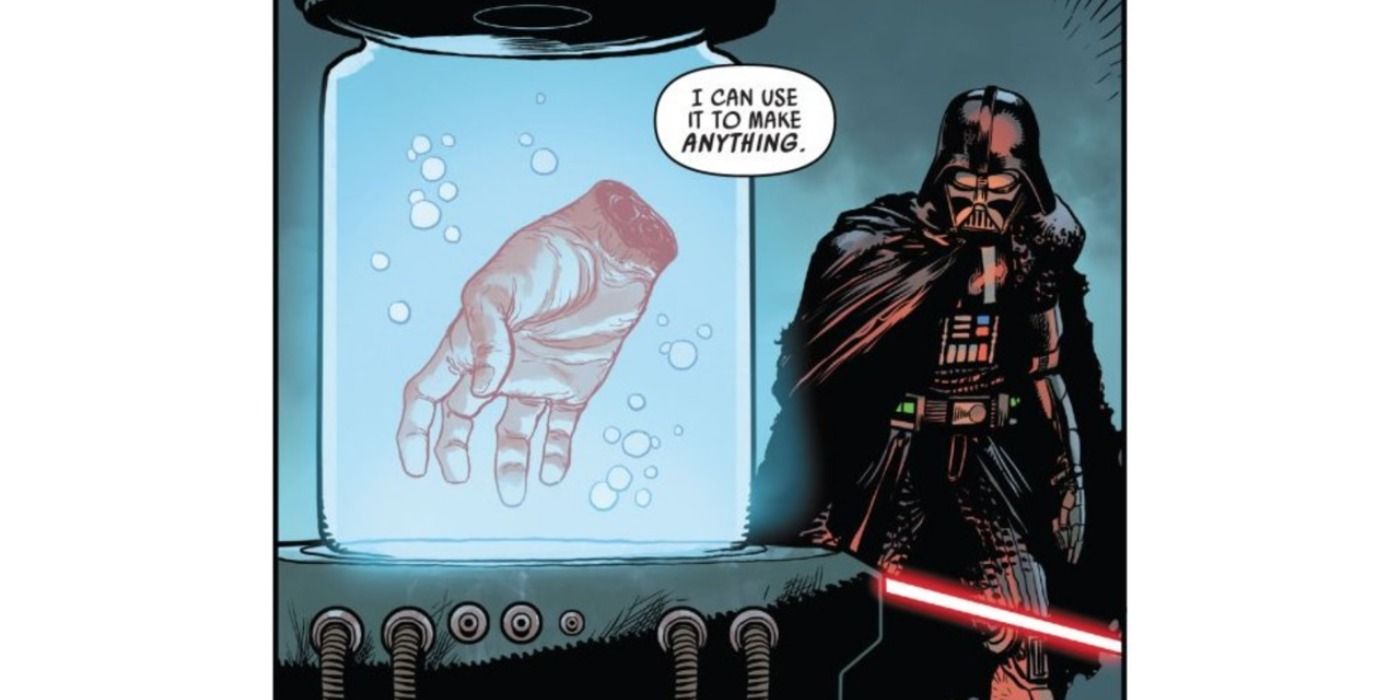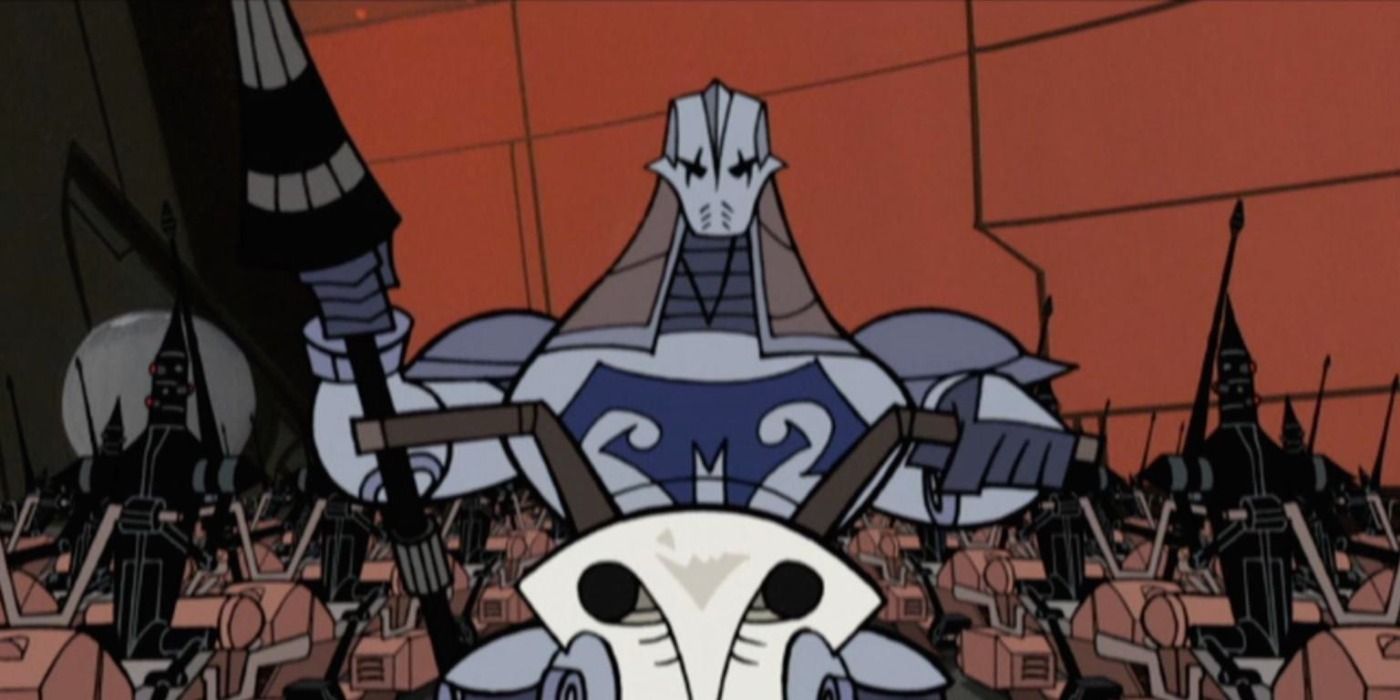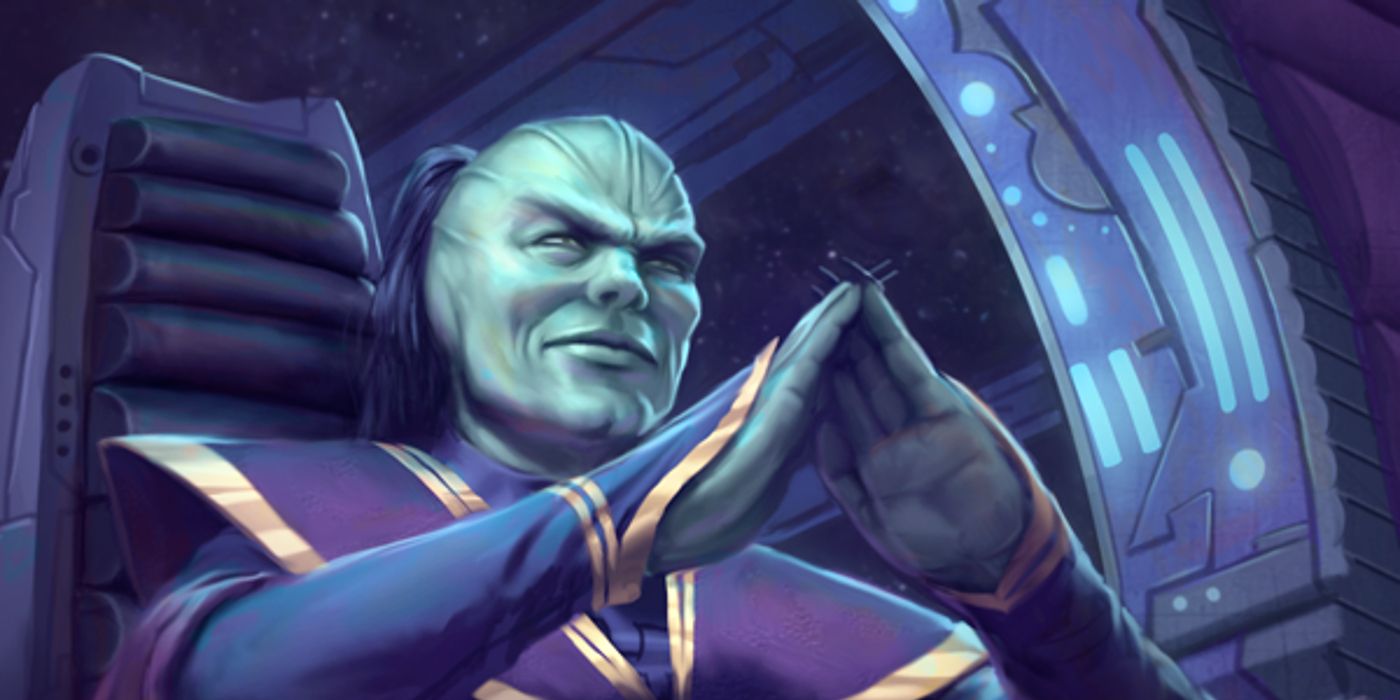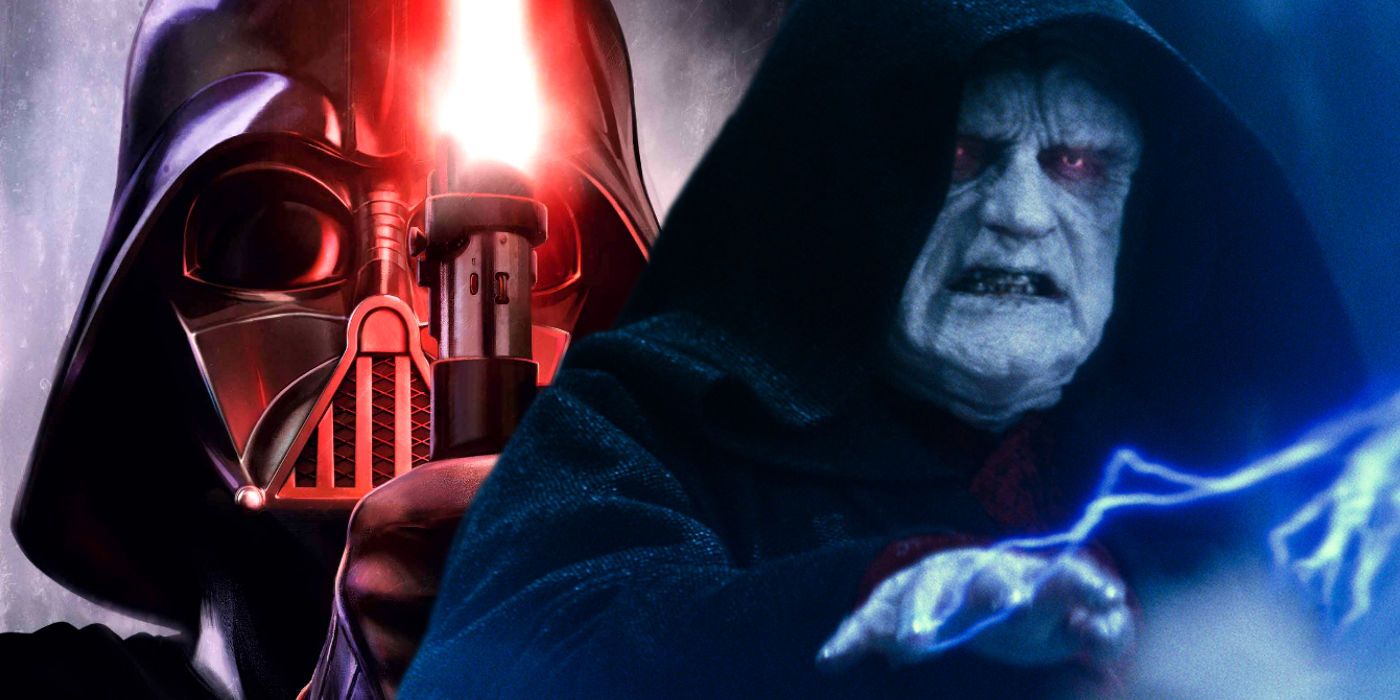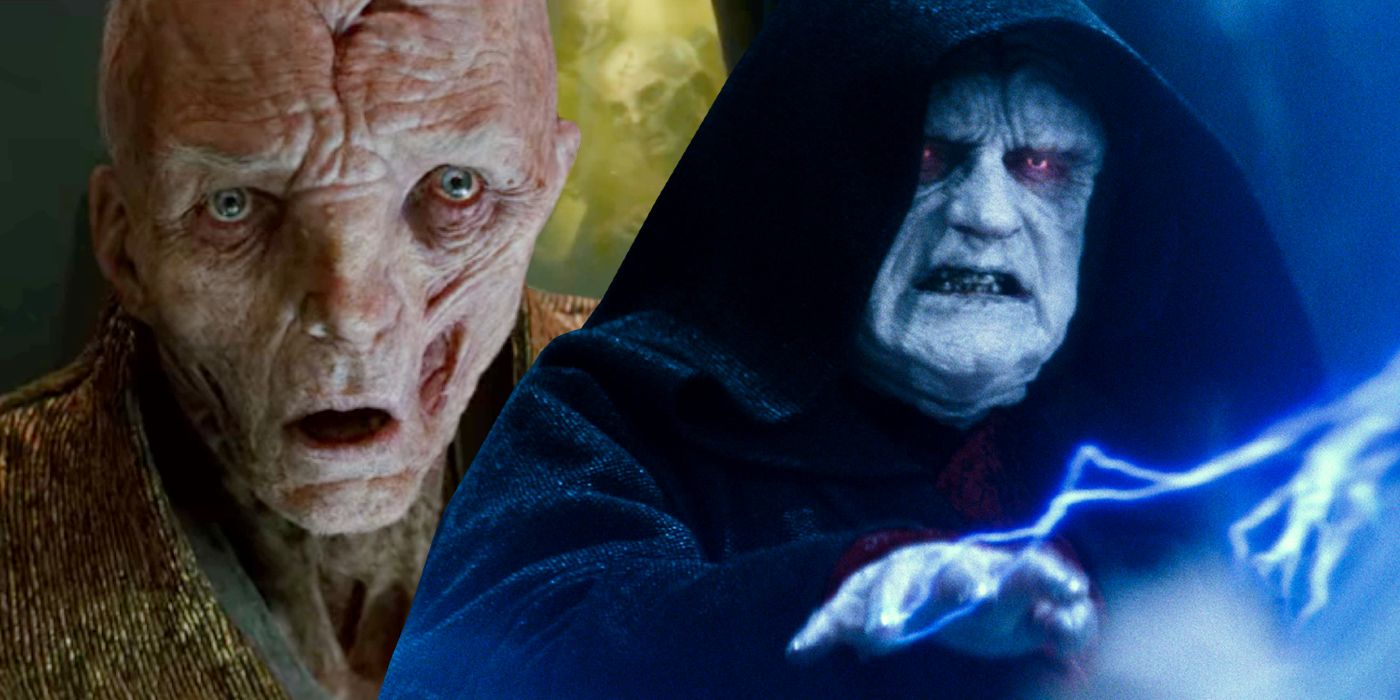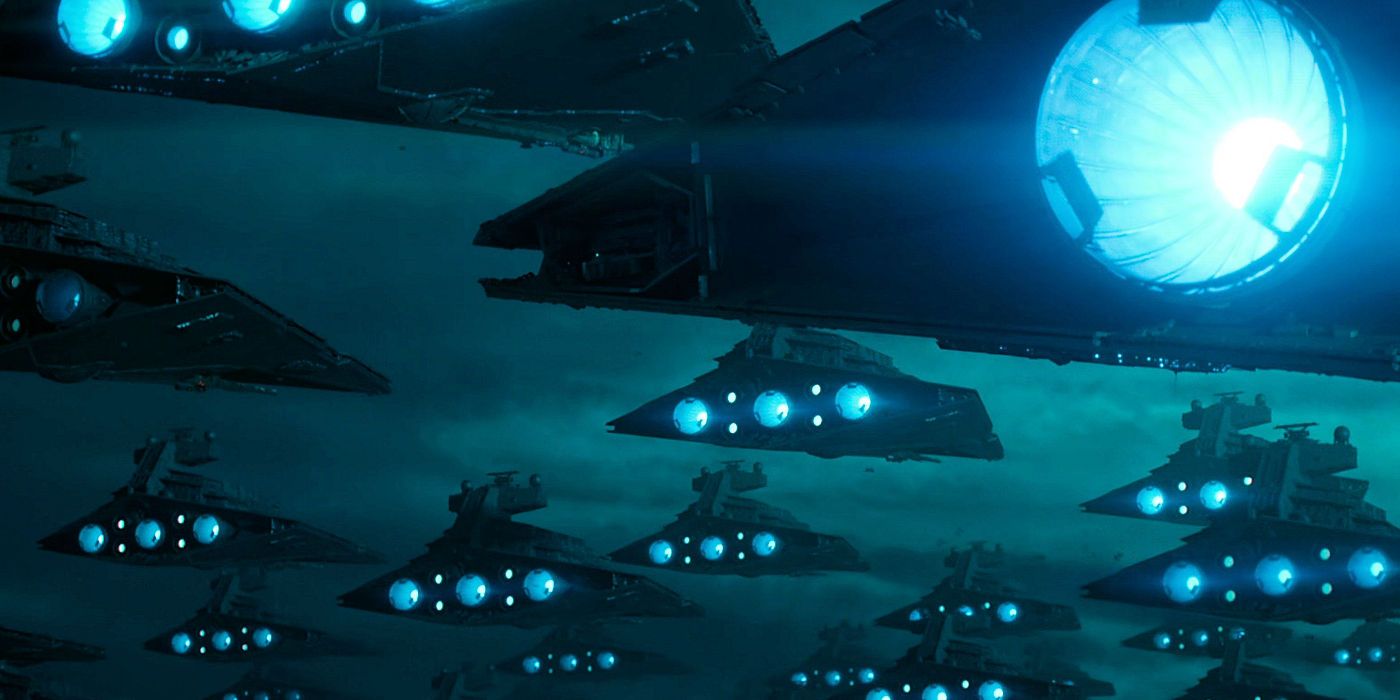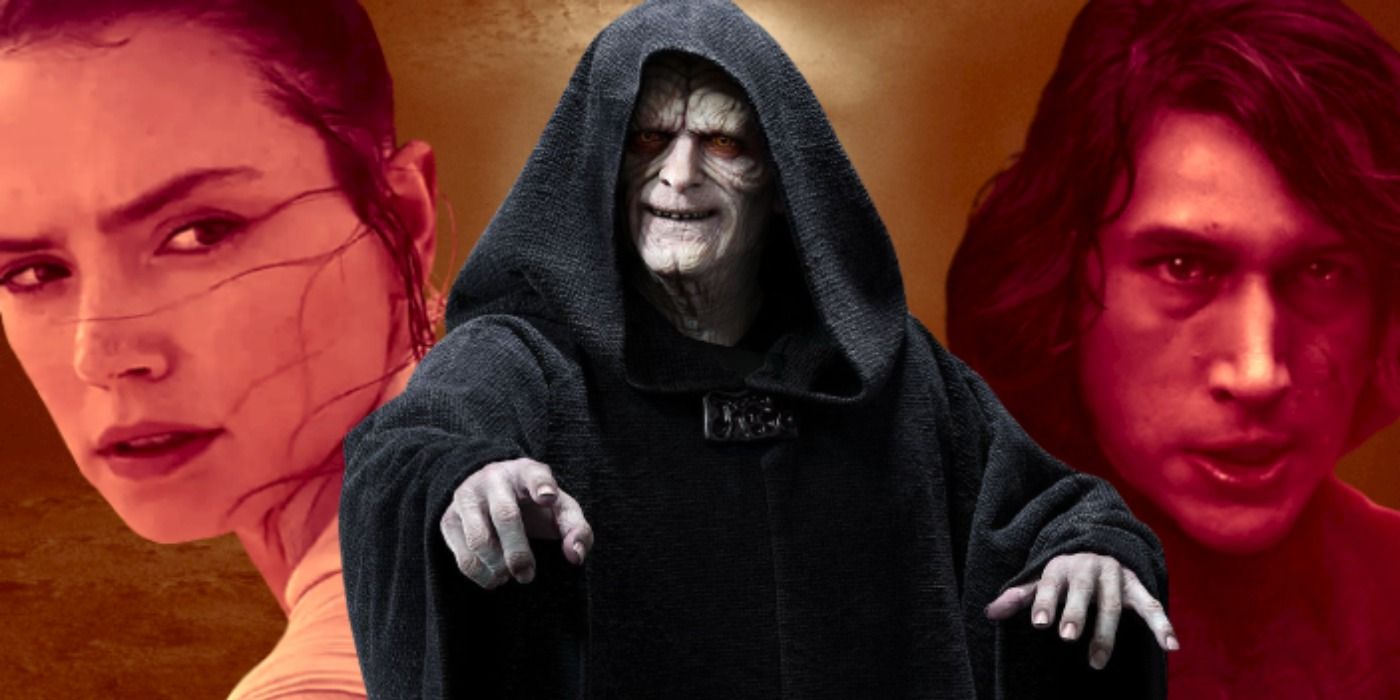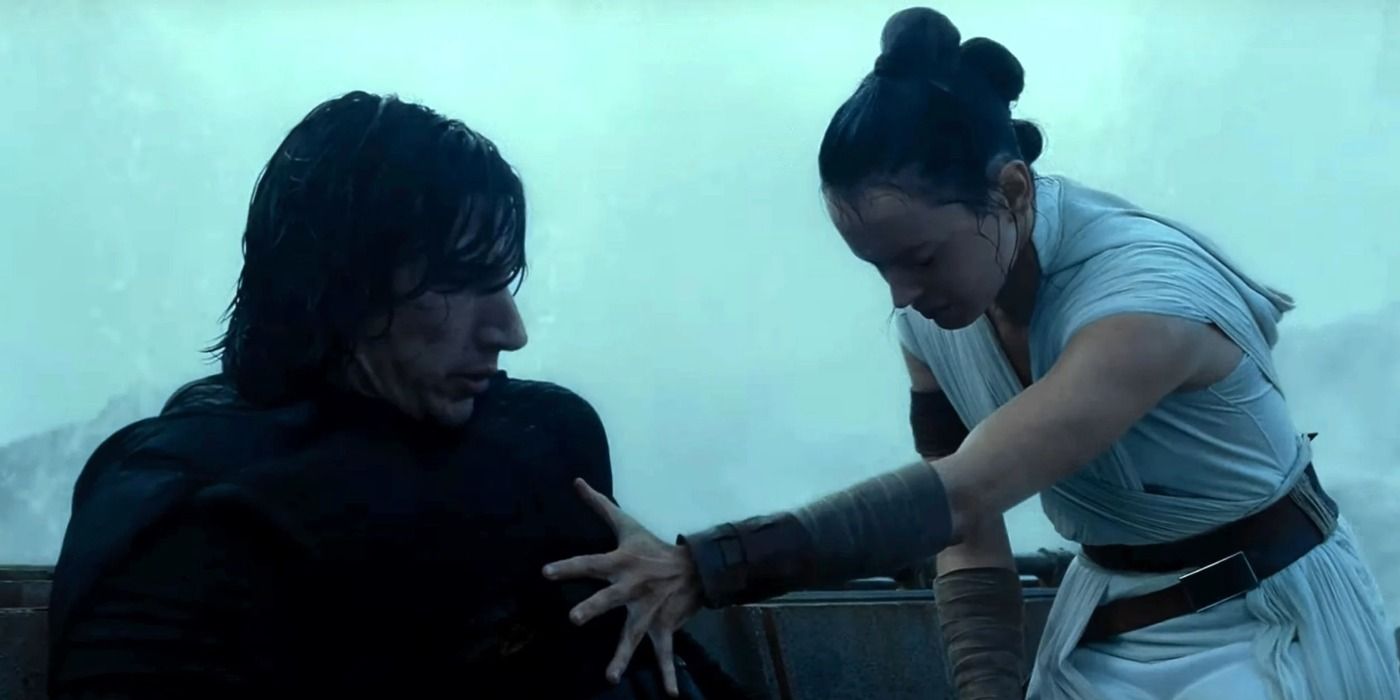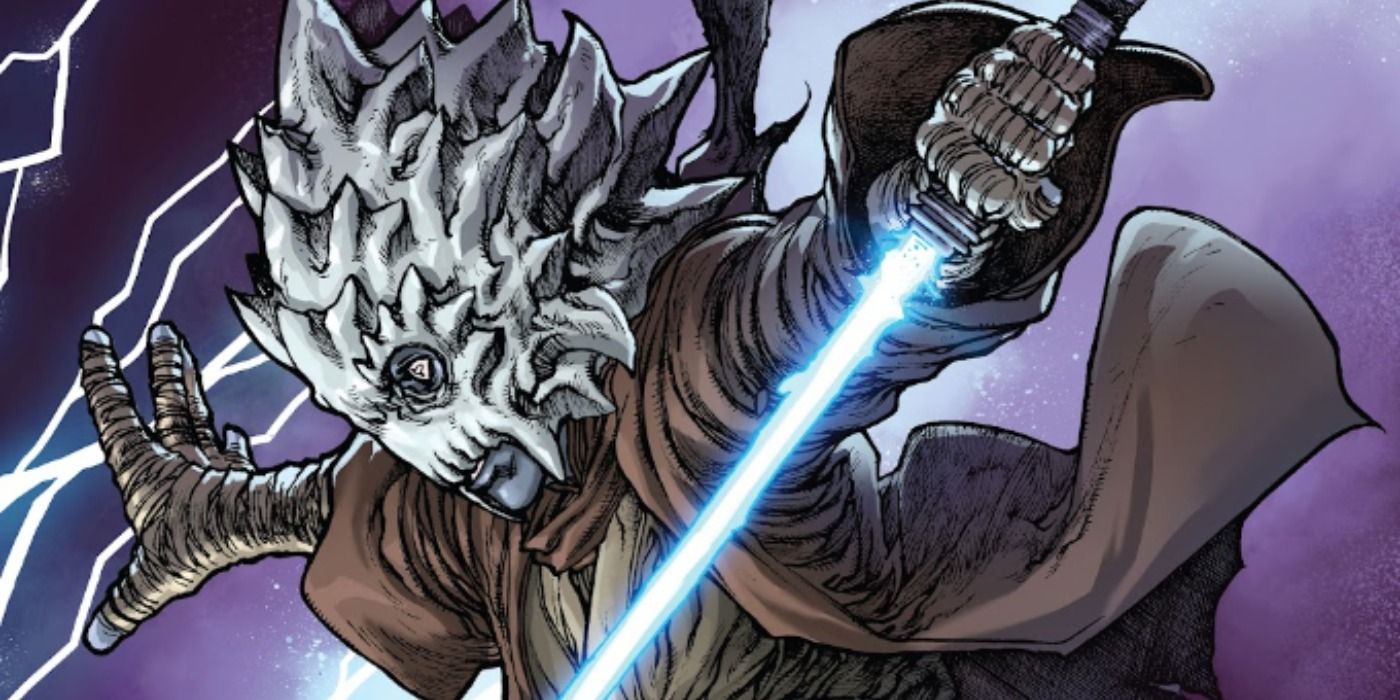2021 has been a busy year for the wider Star Wars franchise, with a whole host of retcons and changes to the lore. The disappointing end of the sequel trilogy and the box office failure of Solo: A Star Wars Story led Lucasfilm to pause their movies, but the franchise has continued to grow in other mediums. Star Wars: The Bad Batch season 1 released on the Disney+ streaming service, Lucasfilm launched a massive transmedia initiative set 200 years before Star Wars: Episode I - The Phantom Menace, and there have been a slew of other novels and audiobooks as well.
Star Wars has always been a transmedia universe; the first tie-in novel was published in 1978, and Lucasfilm's first attempt at a single narrative spanning multiple mediums was in 1996's Shadows of the Empire. But Disney took things one step further when they acquired Lucasfilm in 2012, branding the old Expanded Universes non-canon (or "Legends"), and introducing a new rule of canon. In the past, Star Wars had taken a tiered approach in which the films were absolute canon and tie-ins were expected to adjust to anything he did. In the Disney era, though, everything is equally canon, loosely coordinated by the Lucasfilm Story Group. It means anything can change the lore - including the books and comics.
In fact, in the Disney era Lucasfilm has used tie-ins to explore the wider canon, resolving continuity details and fixing background issues. Major changes in lore have taken place far from the big screen, only noticed by fans who follow other mediums, and that's been especially the case in 2021 - a year where Lucasfilm attempted to clarify the relationship between the sequel trilogy and the broader film franchise.
Star Wars' New Force Powers In The High Republic Books
The Star Wars: The High Republic books and comics have introduced a range of new Force powers. They include:
- The Jedi Meld, in which a number of Jedi bind their power in the Force together to accomplish feats that would be beyond a single Jedi.
- Hyperspace tripping, a difficult-to-control ability to experience visions of distant worlds while traveling through hyperspace.
- A Force power called pathfinding, unique to a Force-sensitive species called the Talortai. They possess an innate sense of direction, allowing them to navigate the cosmos with ease.
- Some Force sensitives apparently possess an intuitive connection to machines, presumably an ability demonstrated by the young Anakin Skywalker when he built C-3PO.
- An ability conceptually similar to the famous Jedi Mind Trick, where Jedi who possess empathic talents can "soothe" the emotions of others. High-profile Jedi feared this power was a little too near to the dark side, as it is inherently manipulative.
Lightsabers Possess A New Weakness - One The Sith Would Never Use
Cavan Scott's novel The Rising Storm reveals lightsabers possess a weakness the Sith have never taken advantage of - because it would also weaken them in any combat with a Jedi. Radiation emitted from a recainium reactor disrupt any energy weapon - from a humble blaster to the legendary weapon of the Jedi and Sith. A prototype reactor was developed during the High Republic Era, although the secret appears to have been forgotten.
The Ancient Origins Of The Sith Have Been Confirmed
Lucasfilm's book Secrets of the Sith purports to be a collection of the Emperor's notes on the Sith, and it confirms the ancient history of the Sith. It reads:
"Legend has it the Jedi Order suffered a deep schism millennia ago. An opposing sect dedicated to the glory of the dark side arose from the ashes. The Sith did not share the Jedi's myopic view of the Force. They embraced the dark side as a means to personal gain and ultimate victory. And, for a time, that great victory would be achieved. The Sith Order grew, spreading its might across the galaxy. But the Jedi became jealous. They would not tolerate a challenge to their authority. After thousands of years of war, the Sith were pushed to the edge of extinction. From the darkness, those who survived laid the foundations for our Order's return... and my rise to power."
Order 66 Wasn't The First Jedi Purge
Star Wars has revealed Order 66 wasn't the first Jedi Purge. Lucasfilm's Star Wars: The High Republic transmedia initiative is set some 200 years before the events of Star Wars: Episode I - The Phantom Menace, at a time when the Jedi Order was at its height. During the book, the members of the Jedi Council discuss whether or not the Jedi should serve as a military force on behalf of the Republic, and the debate turns to ancient history. "There have been times in our history when the Order was reduced to but a handful of members," Jedi Master Yarael Poof observes just after a mention of the Great Sith Wars. This suggests that, as in the old Expanded Universe, the history of the galaxy became an unceasing war between light and dark, and at times the dark came close to destroying the light - making Palpatine's achievements far less remarkable.
Star Wars Has Revealed The Truth Of The Rule Of Two
Building upon retcons from the Star Wars: The Rise of Skywalker Visual Dictionary, Secrets of the Sith cements the relationship between the Sith Rule of Two and the Force Dyad, which features so prominently in the sequel trilogy. It seems the Rule of Two was in part established in an attempt to create the Dyad, with the Sith failing to realize it required both dark and light. In truth, Star Wars: The Rise of Skywalker rather confused the issue with the Rule of Two, introducing the Sith Eternal, and Lucasfilm has been struggling to figure out how to tie that particular cult in with the Rule of Two.
Star Wars Reveals Secrets Of Darth Plagueis & The Force Dyad
Lucasfilm's book Secrets of the Sith gave a first glimpse of Palpatine's legendary master, Darth Plagueis. It seems the Emperor wasn't lying about Darth Plagueis' ability to keep someone else from death, although he had not yet worked out how to apply this extraordinary power to himself. Presumably Darth Sidious chose to kill his master before he could further refine his skills, and continued to develop them himself over the decades. Curiously, Lucasfilm's Secrets of the Sith takes a different approach to Darth Sidious to the Expanded Universe, revealing Darth Plagueis was killed while Palpatine was just a senator - potentially long before the events of Star Wars: Episode I - The Phantom Menace.
Secrets of the Sith suggests Darth Plagueis is the true villain of Star Wars - and all Palpatine's greatest secrets were built on the knowledge his master passed on. Darth Plagueis was even obsessed with the legend of the Force Dyad, and he attempted to forge a Dyad with his apprentice. "Though he was wise in the ways of the Force, he proved unworthy of the task," Palpatine reflected. "I, too, attempted to facilitate such a connection with my apprentice Anakin Skywalker. Yet even with the so-called Chosen One at my side, the balance we shared pulled against the perfection of the dyad." This further hints at another potential retcon; that Palpatine was actually interested in Anakin Skywalker because he thought he could use the boy to create a Force Dyad, just as his master had dreamed.
The Reason Anakin Skywalker Built C-3PO
Star Wars has revealed why Anakin Skywalker built C-3PO. Kristin Baver's Skywalker: A Family At War is Lucasfilm's official biography of the Skywalker family, and it reveals the droid was the manifestation of all Anakin's childish hopes and dreams.
"The boy longed for a life far from Tatooine, free to explore the galaxy and fulfill his dreams of becoming something far greater than a Toydarian's property. The droid he constructed was capable of millions of forms of communication. Anakin dreamed that, one day, with C-3PO as his faithful traveling companion, he and his mother would be able to venture anywhere in the galaxy and be understood and be able to understand the natives, whatever their language."
Star Wars: The Bad Batch Revealed The True Nature Of Order 66
Spinning out of the events of Star Wars: The Clone Wars and Star Wars: Episode III - Revenge of the Sith, Star Wars: The Bad Batch explored the nature of Order 66 in remarkable detail. It revealed Order 66 wasn't just a command; it activated inhibitor chips that rewrote the clones' entire personalities, ensuring they were completely loyal to the Empire - and to Emperor Palpatine in particular. Even more disturbingly, when Wrecker's inhibitor chip was briefly activated his own consciousness remained aware, active but suppressed, suggesting the clones essentially became slaves. Some clones resisted Order 66, and the effect faded over time.
Why Palpatine Really Sent Darth Vader To Mustafar
Lucasfilm has fleshed out the dark history of Mustafar, the volcanic world Palpatine sent Darth Vader to in Star Wars: Episode III - Revenge of the Sith - and where the Emperor encouraged his apprentice to make his home. The planet is a vergence in the Force, the site of a dark side ritual that attempted to conquer death itself. According to Lucasfilm's book Secrets of the Sith, the Emperor was aware of Mustafar's dark history, and hoped Darth Vader could learn more about it through his meditations on Mustafar. "The cost of activating the Aeon Engine was steep, draining the life energies from Mustafar and those who dwelled there," Darth Sidious reflects. "But to obtain true dominion over death, any price is worth paying... If such a device could be re-created, it would undoubtedly prove useful in the hands of the Sith."
How Kanan Jarrus Survived Order 66
The opening scenes of Star Wars: The Bad Batch episode 1 retconned how Jedi Padawan Caleb Dume - destined to become Kanan Jarrus, hero of Star Wars Rebels - survived Order 66. This tale had previously been told in an official tie-in comic, but Star Wars: The Bad Batch told a different version of the tale, in which the clones turned on Caleb and his master Depa Billaba while they were conducting a mission rather than when they were relaxing around a campfire. It further wrote the Bad Batch into the story, because their inhibitor chips didn't activate (at least not right away for some of them), and so they helped Caleb escape.
Star Wars: The Bad Batch Streamlines Saw Gerrera's Story
Militant Rebel leader Saw Gerrera made his live-action debut in Rogue One: A Star Wars Story, but his backstory has primarily been told by Lucasfilm Animation - as well as in James Luceno's novel Catalyst. Star Wars: The Bad Batch streamlined the narrative from Catalyst, however, revealing Saw Gerrera became a Rebel within days of the Empire's creation; the Bad Batch was initially sent to assassinate him, a way of testing their loyalty, but refused to perform the mission.
Cut Lawquane's Story After The Clone Wars
Veteran clone trooper Cut Lawquane was reintroduced in Star Wars: The Bad Batch episode 2. Cut had appeared in Star Wars: The Clone Wars, where he abandoned the Clone Army to settle on the planet Saleucami and raise a family there. Chuck Wendig's Aftermath trilogy revealed the elderly Cut was still living on Saleucami shortly after Return of the Jedi; but according to Star Wars: The Bad Batch, he left shortly after the founding of the Empire. This particular change in continuity is relatively minor, and can be explained away by suggesting Cut simply returned sometime during the Dark Times, but it is rather odd.
Grand Admiral Thrawn's Backstory Has Been Rewritten
Timothy Zahn's latest trilogy has finally revealed the origin story of Grand Admiral Thrawn, a classic villain from the old Expanded Universe who has become a major villain in the Disney era - and has potentially been set up as the main antagonist in the various shows spinning out of The Mandalorian. It had previously been believed Thrawn joined the Empire after being exiled from his own people, the Chiss, but according to Thrawn Ascendancy: Lesser Evil the exile was a ruse actioned by the Chiss military leadership - who believed the Empire could potentially be an ally against the various threats of the Unknown Regions. He always planned to return to his people at some point, and presumably took advantage of the opportunity he was afforded by the end of Star Wars Rebels, when his flagship was blasted into the Unknown Regions by Jedi Padawan Ezra Bridger.
The Emperor Had Luke Skywalker's Lost Hand After The Empire Strikes Back
Darth Vader #11, by writer Greg Pak and artist Raffaele Ienco, reveals secrets of the ancient Sith world of Exegol - and the Emperor's experiments on this world. The Emperor boasts of the facility, which he calls his "scalpel of creation," boasting he can use it to make anything. As he boasts, the panels shift to show a severed hand - and it's pretty clearly supposed to be Luke's hand, cut off by Darth Vader during their duel in The Empire Strikes Back.
Star Wars Has Brought Back One Of Genndy Tartakovsky's Clone Wars Villains
2021 has been a good year for fans of the old Expanded Universe, with a number of key characters brought back into Disney-era canon. One of the best examples is a Clone Wars villain called Durge, who made his debut in Genndy Tartakovsky's 2003 Clone Wars series. Durge was a bounty hunter who had lived for over 2,000 years by the time of the Clone Wars, who was more than a match for most Jedi - possessing the power to regenerate body tissue. Durge made his Disney canon debut as a bounty hunter in Marvel's "War of the Bounty Hunters" event, set shortly before Return of the Jedi.
Marvel Comics Has Brought Prince Xizor, Ruler Of Black Sun, Into Canon
Prince Xizor is one of the most important villains in the old Star Wars Expanded Universe, a Falleen crime boss who ran the criminal cartel known as Black Sun. He appeared in the celebrated Shadows of the Empire transmedia initiative, with Leia Organa heading to him shortly before Return of the Jedi in the hopes he'd help track down the missing Han Solo. Prince Xizor has officially returned to canon in Star Wars: Crimson Reign #1, by Charles Soule and Steven Cummings, and no doubt he'll prove to be a power player in Soule's ongoing story.
A Sequel Era Dark Side Cult Has Been Explained
Author Chuck Wendig's "Aftermath" trilogy introduced a dark side cult called the Acolytes of the Beyond, who flourished in the aftermath of Return of the Jedi. Lucasfilm's recent Secrets of the Sith finally explained the Acolytes of the Beyond, revealing they were established by Palpatine's loyalists. The Acolytes initially dedicated themselves to destroying Sith artifacts, believing that by doing so they would release the dark side. Secrets of the Sith suggests the Acolytes of the Beyond served the Emperor's purpose, helping erase records of the Sith and thus making it harder for his resurrection to be discovered.
Palpatine Originally Created Snoke As A Potential Host
Secrets of the Sith reveals Palpatine's original plan for Supreme Leader Snoke. Snoke was created as a potential host for the Emperor's disembodied spirit, but the strand-cast proved unable to contain his essence, and the attempted possession presumably explains the Supreme Leader's disfigurements. This corresponds with Legends, where the Jedi Vs. Sith Handbook explained genetically engineered beings deteriorate when exposed to the dark side. "Because the clones are one step removed from the natural life process itself, they are much more vulnerable to the effects of the dark side, and age at an extremely accelerated rate."
Star Wars Has Retconned The Emperor's Rise Of Skywalker Star Destroyers (Again)
Star Wars has retconned The Rise of Skywalker's Star Destroyers - again. The Star Wars: The Rise of Skywalker Visual Dictionary claimed the Emperor's Star Destroyer fleet were equipped with reactor-fed axial superlasers, but Lucasfilm has decided to switch this up. According to Greg Pak and Raffaele Ienco's Darth Vader #11, they were equipped with Death Star technology after all - powered by kyber crystals the Empire had plundered from across the Unknown Regions.
Palpatine's Real Plans For Ben Solo & Rey Revealed
Lucasfilm's Secrets of the Sith reveals Palpatine's real plan for Ben Solo and Rey. It seems the Emperor originally intended Ben Solo to become host for his spirit, believing the inherited power of the Chosen One would make him ideal. He would then have allowed Rey to become Empress, ruling alongside him - although, of course, it's unlikely Darth Sidious would have allowed this to be a partnership of equals. The Emperor's plans must have changed when Kylo Ren began to break free of the dark side, and his focus shifted on to Rey instead.
Star Wars Confirms Rey's Force Heal Freed Kylo Ren From The Dark Side
Rey's Force Heal power is associated with her being part of a Force Dyad, and Kristin Baver, Skywalker: A Family At War - imagined as a biography of the Skywalker family - confirms there is a redemptive aspect to Force Heal. "Healing through the Force is a peculiar thing," the book observes. "Rey transferred her own Force energy to the wounded man at her feet; however, the interaction did more than merely mend a gaping wound. Burned flesh and damaged organs were made whole again, and even the scar on his face disappeared. For the first time in more than a decade, Ben Solo's mind cleared." It seems Rey's Force Heal affected Kylo Ren's soul, redeeming him.
A Yuuzhan Vong Creature Has Returned To Star Wars Canon
One of the most entertaining changes is in Star Wars lore is in IDW's Star Wars: The High Republic Adventures #9, which introduces a creature known as the vonduun crab into the Star Wars canon. In Legends, the vonduun crab were creatures associated with an alien race called the Yuuzhan Vong, who "shaped" creatures to make them useful. This is a delightfully deep cut into Star Wars lore, with Daniel Jose Older and Toni Bruno's comic revealing the canon origin of the creatures - and they apparently originate from a planet at the edge of the galaxy named Zav Alox, with the world's inhabitants wearing the shells of vonduun crabs as part of an initiation ritual.

